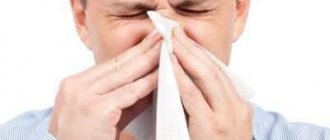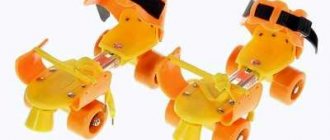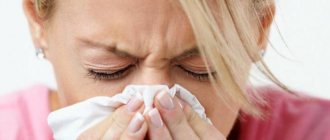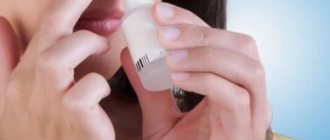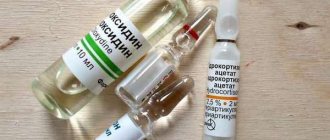Before treating allergic rhinitis, it is necessary to decide on the set of medications that will be used in this treatment. The composition of this set greatly depends on the age of the patient, the presence of other diseases, and the characteristics of the physiological state. For example, pregnant women and nursing mothers should not use most of the remedies that are truly effective against allergic rhinitis.
However, in almost any case, you can choose effective remedies for allergic rhinitis, which will allow you to temporarily get rid of unpleasant symptoms.
It is only important to remember that not a single remedy for allergic rhinitis can completely get rid of the disease or cure it . All these medications are intended only for temporary relief of rhinitis symptoms and alleviation of the patient’s condition. In most cases, if a person asks how to treat an allergic rhinitis, he expects complete relief from the disease. Unfortunately, this result cannot be achieved with drug therapy.
In order to completely get rid of allergic rhinitis, you need to take appropriate organizational measures. We talked in detail about the tactics of treating allergic rhinitis in a separate article. Medications serve only to temporarily relieve symptoms and alleviate the patient’s condition until the allergen is eliminated. And today there are a lot of such funds.
II generation antihistamines
Fenkarol.
The sedative effect of fenkarol is either weak or not manifested at all. Side effects, such as dry mucous membranes, are not characteristic of fenkarol. Diazolin. This drug also causes little hypnotic effect and has a prolonged (long-lasting, continuing even after drug withdrawal) effect.
Suprastin. The hypnotic effect of this drug is quite strong. Additionally, the drug also has an antispasmodic effect, so it is often used as part of a lytic mixture when it is necessary to quickly reduce the temperature, for example, during an acute respiratory infection.
Tavegil. Among all the drugs in this group, tavegil has the most pronounced antipruritic effect. For bronchial asthma and respiratory infections, tavegil is prescribed with caution or not prescribed at all, as it leads to thickening of sputum.
Fenistil has the mildest effect, which is why this drug is often used in children under one year of age. When applied topically, fenistil (fenistil gel) easily relieves itching and redness characteristic of allergic skin reactions.
Zyrtec - the drug does not have a sedative effect, so it is often prescribed to people whose professional activities require quick reactions - for example, drivers. In addition, Zyrtec has zero drug interactions - that is, it does not interact with any medications, therefore it is most often prescribed as part of complex therapy for diseases - both allergic and infectious.
Claritin. The drug is approved for use in children starting from 2 years of age. It does not cause drowsiness and is considered one of the most effective antihistamines. The disadvantages of Claritin include its ability to create toxic combinations with some antifungal drugs (for example, Nizoral) and some antibiotics (for example, Sumamed).
Kestin. A long-acting drug, well suited for the control of seasonal allergic rhinitis. It is usually started to be used 10-15 days before the expected start of flowering in order to negate the symptoms of allergic rhinitis at the beginning of flowering.
Telfast. This drug is considered safe, as it is quickly eliminated from the body and does not cause symptoms of cardiac arrhythmia, which are characteristic of many second-generation antihistamines. The drug begins to act fairly quickly after use and within an hour after use it relieves almost all symptoms of allergic rhinitis.
Xizal. The effect of the drug begins within 12 minutes after ingestion and lasts for 24 hours after use. Xyzal is approved for use in children over 6 years of age.
Allergodil is a topical antihistamine (nasal spray). It is characterized by a rapid onset of action with very small administered doses. Ineffective for nasal congestion.
Related video: Guide to choosing medications
Depending on the active ingredients, allergy drops can be hormonal, antihistamine, or cromones. Depending on the therapeutic effect, allergy drops are classified into vasoconstrictor, moisturizing, antibacterial, and homeopathic.
Each drug from this group contains glucocorticosteroid hormones. Antiallergic drugs based on glucocorticosteroids are used for severe forms of an allergic reaction.
Compared to other drugs, they are highly effective, lack a systemic effect, can be used in children from 2.5 years of age, and have a cumulative effect (the therapeutic effect persists for several days to weeks after discontinuation of the drug). In addition, the patient does not get used to the effects of the drugs, and nasal drops only need to be used once a day.
Antiallergic hormonal drops are produced only in the form of sprays, due to which the contents of the bottle are evenly distributed throughout the entire nasal mucosa and penetrate into its most distant parts.
However, such drugs also have disadvantages. These include the possible development of side effects, such as dry nasal mucosa and nosebleeds. If you drip regularly, the effect appears 3-4 days after the first use. So there will be no quick relief from symptoms.
- "Flixonase". Prescribed for children from 4 years of age. Apply once a day, usually in the morning;
- "Nasonex". For children over 2 years old. The use of the drug is allowed during pregnancy. It is considered the most effective drug for treating allergies accompanied by the formation of nasal polyps. However, long-term use may cause side effects;
- "Awamis." Contraindicated for pregnant women, given to children only after 4 years. Has a pronounced local effect for allergies;
The anti-allergenic effect is achieved due to the main active ingredient - an antihistamine component, which selectively blocks the receptors responsible for triggering the allergic inflammation reaction. Compared to hormonal drugs, antihistamines act faster and block all the symptoms of allergic rhinitis: runny nose, swelling, lacrimation and itching.
Usually prescribed:
- "Fenistil" for children from 2 years old and adults;
- "Allergodil." Available in the form of drops for the eyes and nose;
- "Vibrocil." A combined product containing antihistamine and vasoconstrictor components. The product is intended for emergency relief of allergy symptoms. The course of treatment is 7-10 days.
- "Sanorin Analergin". Prescribed to eliminate allergy symptoms in children and adults. The course of treatment is 2 weeks.
Unlike hormonal drugs, antihistamines act quickly enough, the therapeutic effect is noticeable after a single use. These drugs are considered the most effective in the treatment of seasonal allergic rhinitis.
Cromony
The main task of these drugs is to stabilize the membranes of mast cells, from which histamine is released during allergies (it is the latter that provokes the inflammatory reaction). Cromones strengthen the cell wall, and histamine is not released.
Doctors recommend:
- "Cromohexal". Spray and drops for eyes and nose. Acceptable for use during pregnancy;
- "Ifiral." Powder that can be used for inhalation using a nebulizer;
- "Kromosol." Allergy spray, prescribed for children over 3 years old.
All drugs act slowly and have cumulative properties. However, if allergies worsen, there is no point in using them. So it is better to use cromones for the prevention of seasonal allergies and in the complex treatment of allergic rhinitis in combination with bronchial asthma.
The bulk of the preparations contain sea water, which moisturizes the nasal mucosa, washes away dust particles, allergens and stimulates the natural defense of the nasal mucosa. Unlike other drugs, moisturizers do not treat allergies and do little to eliminate allergic swelling.
But in the complex treatment of the disease, they are very effective; they can be used to treat small children, during pregnancy and during breastfeeding.
Vasoconstrictor drugs are used as an emergency treatment for severe nasal swelling and breathing problems. The following drugs are available in pharmacies:
- short-acting (“Naphazoline”). They act quickly, but only 2-3 hours. They do not have the best effect on the condition of the nasal mucosa and can be addictive, so they can be used for no longer than 5 days;
- medium duration (“Xylometazoline”). Effective for 8-10 hours. They cause a rapid vasoconstrictor effect, but work more gently compared to the first group;
- long-acting (“Oxymetazoline”). The drugs last up to 12-16 hours and are less addictive and have less side effects.
The preparations contain a local antibiotic (Isofra, Polidexa). Antibacterial drugs are prescribed only when allergic rhinitis is combined with a bacterial infection.
In homeopathic preparations, the active ingredients are herbal components (“Pinosol”). They have little effect on allergic rhinitis. In patients with seasonal herbal allergies, these medications may cause an increased allergic reaction because they contain extracts and extracts of various plants.
Description of the disease
Allergic rhinitis (rhinitis), or hay fever, is a common disease that develops when the body is hypersensitive to certain irritants. With direct contact with them, a wide range of symptoms appears - itching, sneezing, profuse nasal discharge, decreased sense of smell and conjunctivitis.
Depending on the course of the disease, seasonal and year-round rhinitis are distinguished. Allergies have been confirmed in both children and adults; most often, the pathology develops between the ages of 10 and 20 years. There is no effective treatment; therapy is only symptomatic and supportive.
Allergic rhinitis occurs upon contact with an irritant.
Provoking factors may include:
- plant pollen;
- medications;
- animal hair;
- cosmetics;
- household chemicals;
- dust;
- insects.
There are 3 forms of allergic rhinitis:
- Seasonal. It usually develops in spring or summer. The seasonal form is characterized by the presence of individual intolerance to plant pollen.
- Persistent (year-round). Occurs upon contact with other pathogens (food, medicines, etc.).
- Professional. This form occurs with constant contact with an irritant, due to the characteristics of a person’s specialization. In particular, bakers often develop an allergy to flour, and carpenters often develop an allergy to formaldehyde.
Each of the listed forms of the disease is characterized by the same symptoms, the intensity of which varies depending on the degree of sensitivity of the body to a particular pathogen.
How often can you inject Diprspan if you have allergies? Read the link.
Why is it necessary to use drops?
The effect of drops for nasal congestion is determined by the type of drug used. For allergic rhinitis, antihistamines, vasoconstrictors and hormonal medications are mainly prescribed. Irrigating medications based on sea water are also used to eliminate congestion and moisturize the mucous membrane.
The effect of antihistamines is due to the fact that the drugs inhibit the functions of a special substance (histamine) synthesized by the body in response to exposure to an allergen. Thanks to the activity of these medications, the symptoms of rhinitis disappear.
Effective vasoconstrictor drops eliminate swelling of the mucous membrane, thereby restoring nasal breathing. This result is achieved due to the fact that drugs of this group reduce the lumen of blood vessels, as a result of which the speed of blood circulation decreases and the inflammatory process is suppressed.
Read how to do inhalations correctly for allergic rhinitis here.
Hormonal drops and sprays affect mediators that trigger the inflammatory process. Medicines in this group provide a quick effect: nasal breathing is restored within a few minutes.
Other means of combating runny nose in adults and children
In addition to prescribing medications, you can fight congestion in other ways. Below are the most effective techniques.
Massage and acupuncture of the nose are performed by influencing special biological points. The main advantage of massage is its accessibility. You can massage the base and wings of the nose, the points between the eyebrows and on the bridge of the nose anywhere and at any time.
The main feature of this treatment area is safety. There are many homeopathic remedies that can help get rid of congestion. These include:
- Aconite;
- Gelsenium;
- Allium flail;
- Stikta;
- Sulfur, etc.
Each remedy combats a specific type of problem.
Most often, folk methods act as a complement to traditional treatment. In this case, you can use the following techniques:
- rinsing the nose with saline solution;
- instillation of aloe juice and garlic into the nose;
- carrying out steam inhalations over decoctions of chamomile, calendula or regular potatoes.
Herbal medicines are distinguished by their safety, due to which they can be used both in pregnant and lactating women, and in children. The best means are:
- chamomile;
- sage;
- calendula;
- eucalyptus leaves.
Surgical treatment of difficult nasal breathing is performed only in emergency cases. Such situations include:
- adenoids;
- deviated septum;
- tumor processes;
- the presence of severe inflammation;
- entry of a foreign body.
Physiotherapy for nasal congestion includes several techniques:
- UFO (ultraviolet radiation) - this procedure is carried out 2-3 days in the morning. Each nasal canal is treated for 1-2 minutes, depending on the complexity of the disease;
- UHF - treatment is carried out through weak electrical impulses. At the same time, it is recommended to carry out the procedure in the same way in the morning;
- Laser therapy is carried out in a physiotherapy room under the supervision of a specialist. It is considered the most effective.
There are several points responsible for the feeling of nasal congestion. In this case, acupuncture gives an amazing effect, almost instantly making a person’s breathing easier. It is important to understand that only an experienced specialist should perform the procedure.
To treat your nose at home, you can use the following tips:
- wash the mucous membrane daily - to prepare the solution, you need to take 0.5 teaspoon of sea salt and dissolve it in a glass of warm water. After this, the mixture is drawn into a syringe and injected into one nostril, while holding your breath. After this, the procedure is repeated from the second nostril;
- Instill fresh aloe juice into your nose, 2-3 drops in each nostril in the morning and evening.
II generation antihistamines
Antihistamines are the most commonly prescribed group of drugs for allergic rhinitis. Tablet forms are divided into three generations, which differ in composition, mechanism of action and number of side effects:
- first generation. This group includes Suprastin, Tavegil, and Diazolin. Their advantage is the rapid relief of the general condition by relieving tissue edema, reducing itching, reducing the frequency of sneezing and facilitating breathing. They are considered “first aid” drugs. Despite this, tablets are used quite rarely compared to medications of other generations. The fact is that they have a strong sedative effect, which is why they are limited in use by people whose profession requires concentration. The disadvantages also include a short-term therapeutic effect (no more than 5 hours). The risk of changes in psycho-emotional state, aggression, agitation, and hysteria cannot be excluded. Due to the high likelihood of addiction, it is recommended to select a different treatment regimen every three weeks;
- second generation (Loratadine, Claritin, Cetrin). Clear advantages include the absence of drowsiness after taking the drug. Tablets for allergic rhinitis have a prolonged effect, so that after a single dose the effect lasts for a day. Over the next few days, the person continues to be under medicinal protection from allergens. Restrictions on use apply to people with severe cardiac pathology.
Claritin has a minimal number of side effects, so it is often prescribed even to infants.
- third generation (Telfast, Zirtek, Tsetrilev). These drugs for allergic rhinitis are the best in the fight against the disease. They do not have a negative effect on the nervous system, and also do not affect the myocardium. Some representatives of this group are capable of accumulating in the body, which must be taken into account when drawing up a treatment regimen. The drugs can be used for several months.
Tsetrin
The active ingredient of the drug is cetirizine. It reduces the severity of symptoms and prevents their reappearance during hay fever. Regular use provides a decongestant, antipruritic effect, blocks the action of histamine, and also reduces vascular permeability.
Cetrin is prescribed as a tablet once a day. Children over six years old are recommended to take half a tablet twice a day. The drug should be taken with water in a small volume. The duration of the course can be 1-4 weeks, but if necessary it can be extended to six months.
The medicine has some side effects, among which it is worth highlighting:
- tremor, dizziness, insomnia, migraine, headache, agitation;
- change in taste sensations;
- dry mouth, tongue discoloration, liver dysfunction;
- stomatitis;
- rapid heartbeat, increased blood pressure;
- joint, muscle pain; inflammation of the throat mucosa.
Contraindications include pregnancy, lactation period, hypersensitivity to cetirizine.
Cromoghlin
A spray for allergic rhinitis blocks the release of biologically active substances that stimulate the development of allergies. The drug is prescribed for therapeutic and prophylactic purposes.
Among the contraindications we highlight:
- individual intolerance;
- polypous formations in the nasal passages;
- severe renal, liver failure;
- pregnancy (first trimester);
- age up to five years.
The remedy for allergic rhinitis must be used daily, otherwise the therapeutic effect will be incomplete. The recommended dosage is one spray up to four times a day. If necessary, the frequency of administration can be increased to six.
The drug is prescribed for a long course. Even after symptoms have reduced, its use should be continued, reducing the frequency of administration. The medicine is mainly prescribed in combination with a vasoconstrictor to obtain a quick effect.
Adverse reactions include:
- lacrimation;
- increased tissue swelling;
- unpleasant taste;
- nausea, vomiting;
- irritation, dryness of the nasopharynx.
It is believed that in cases of mild allergic rhinitis, the use of antihistamines alone may be quite sufficient to relieve all symptoms of allergic rhinitis. If the use of antihistamines is not enough (they really do not have a significant effect on nasal congestion and nasal discharge), then in this case they already speak of a moderate or even severe course of allergic rhinitis.
In such cases, along with antihistamines, doctors have to prescribe drugs from other groups - primarily topical hormonal agents (topical steroids).
Antihistamines are divided into first generation drugs, which have a sedative (hypnotic) effect, and second generation drugs, which do not have this effect. We will look at some drugs of the first and second generations, which are most often used in the treatment of allergic rhinitis in children.
Ketotifen. Ketotifen has virtually no side effects. The effect of the drug begins 2 hours after administration and lasts for 12 hours. Ketotifen is approved for use in young children.
Cromohexal. The drug is available in the form of a nasal spray, a solution for inhalation (used for bronchial asthma) and in the form of eye drops. Cromohexal for allergic rhinitis effectively reduces the amount of nasal discharge, nasal itching and sneezing, but has virtually no effect on nasal congestion. Due to the fact that cromohexal, in addition to the release of histamine, also blocks the release of almost all inflammatory mediators, it is widely used by doctors in Europe as an anti-inflammatory drug for acute rhinitis.
The age limit (up to 5 years), which is in the instructions for the drug, is only valid for inhalation through a compressor inhaler. Inhalation of cromohexal in children under 5 years of age can cause bronchospasm. At the same time, cromohexal nasal spray can be used from 2.5 years.
Antiallergic nasal drops
For the treatment of allergies, there is a large selection of drops made for all age groups and patients with different health conditions. Vasoconstrictors will help eliminate a runny nose and swelling of the mucous membrane, and for more serious problems, hormonal and antihistamines are used. Regardless of the type of allergy, you should consult your doctor before purchasing medicinal nasal drops. There are a number of other recommendations for choosing funds:
- choose drops for allergic rhinitis based on the individual characteristics of the body;
- It is better for pregnant women to pay attention to safe preparations based on sea water;
- If the mucous membrane of the nasal cavity dries out, you should switch to oil nasal drops for allergies, products with a natural composition.
- How to oblige children to support retired parents
- How to make cherry compote for the winter
- State pension for long service - conditions of appointment, amount of additional payment and procedure for registration
Hormonal nasal drops
Allergic rhinitis is effectively treated with hormonal nasal medications. They have an anti-inflammatory and decongestant effect, helping to relieve itching with congestion. The effect does not occur immediately, but lasts for a long time. The downside is that addiction to them quickly develops, and the likelihood of unwanted consequences increases. More often, hormonal medications for allergies are used in complex therapy. Such medicines include:
- Benacap. The active component is a synthetic glucocorticosteroid budesonide, which reduces inflammation, has an immunosuppressive effect and eliminates other local signs of allergy. Benacap is well tolerated during long-term therapy, without causing side effects or severe addiction. At the same time, the list of contraindications includes sensitivity to components, tuberculosis and respiratory infections, pregnancy, and breastfeeding.
- Avamis. This hormonal drug helps relieve the symptoms of allergic rhinitis. It is available in the form of a spray, which reduces the amount of mucous secretions, reduces swelling, burning and congestion. In addition, Avamis relieves the symptoms of allergen getting into the eyes - lacrimation and itching. For adults, 2 doses are recommended in each nostril once a day. It should be borne in mind that the effect can only occur after 8 hours, but the drug cannot be instilled again to avoid an overdose. The effect lasts 24 hours, and within 3 days of daily use the maximum effect is achieved, after which the dose can be reduced to 1 injection of solution for maintenance.
Vasoconstrictor drugs
This type of medication helps to constrict the blood vessels in the nasal mucosa to reduce swelling and make breathing easier. Vasoconstrictor medications are often used if the allergen is animal fur, and for seasonal allergies to poplar fluff and plant pollen.
The effect occurs within 1-5 minutes and lasts up to 10 hours. The disadvantages of means for constricting blood vessels in the mucous membrane include the lack of therapeutic effect and rapid addiction , which is why using nasal drops for allergies for more than 5 days is not recommended in order to avoid complications. The following vasoconstrictors can be distinguished:
- Naphthyzin. Release form: drops and spray. The medication is not absorbed into the blood, but it must be used for a week, after which the use is stopped because there will be no effect. Be sure to read the instructions for use, as Naphthyzin has many contraindications and side effects.
- Xilin. It is recommended to use the medicine no more than a couple of times a day. After using Xylin, the amount of mucus and other symptoms of allergic rhinitis decrease. Side effects include headache, insomnia, arrhythmia, increased blood pressure, and shortness of breath.
- Social card of a pensioner - advantages and benefits, documents for registration, rules of issue and validity period
- Military sanatoriums in Sochi for military pensioners - an overview with a description of the conditions of rest and treatment
- Zucchini pancakes without eggs
Antihistamine nasal drops
The main treatment for allergies is antihistamines, which act by reducing the level of histamine in the body. Histamine is a substance responsible for allergic reactions. So, with the help of nasal drops for allergies, you can eliminate swelling, runny nose, congestion and itching, which are the most unpleasant symptoms of the disease . The disadvantages include contraindications (pregnancy, childhood), addiction to the active component and the presence of side effects. Effective antihistamines are:
- Fenistil. The active component of the drug is dimethindene maleate. When used daily, Fenistil has a weak sedative, antikinin, and anticholinergic effect. It is prohibited to take Fenistil if you are sensitive to the composition, angle-closure glaucoma, or prostate hyperplasia.
- Cromohexal. Copes with allergies when used systematically. Moreover, already in the first days of use, most manifestations of an unpleasant disease decrease. The spray is used 4 times a day in each nostril, 1 injection. The course lasts 4 weeks, but after the desired effect appears, you can reduce the daily dosage.
Natural preparations
It is recommended to use natural nasal drops as an addition to basic allergy treatment. The action of such drugs is aimed at a wide range of symptoms of the disease - swelling, inflammation, irritability and dry mucous membranes that appear after taking drugs to constrict blood vessels. In addition, natural medicines strengthen local immunity.
The advantages include the absence of side effects and contraindications, except for individual intolerance. The disadvantage of homeopathic medicines is that the effect is not very pronounced , so in case of severe discomfort, you should use remedies with a different effect. You can choose a natural nasal remedy from the list below:
- Pinosol;
- Delufen;
- Edas-131;
- Euphorbium compositum;
- Sinuforte.
Children's allergy drops
If your baby under one year of age exhibits allergy symptoms - sneezing, runny nose, lacrimation and others, you can choose the following as a local treatment for the nose:
- Zyrtec. Used for children from six months. It not only alleviates the condition, but also relieves the clinical symptoms of allergies.
- Zodak. Approved for use after two weeks of birth. It is effective for both acute and prolonged allergic rhinitis.
- Aqualor Baby. Can be used from the first days of life. Place a couple of drops in each nostril, and after rinsing the nose of allergens, help the baby blow his nose.
If your child is between 1 and 4 years old, consider the following allergy medications:
- Vibrocil. A vasoconstrictor drug that should not be taken for a long time to avoid complications.
- Prevalin. After using the drops, the amount of mucus and nasal congestion decreases.
Antiallergic drops during pregnancy
Antiallergic drops that contain herbal composition, sea salt extract, and essential oils are considered safe for pregnant women . The following funds are available:
- Marimer. The solution is prepared on the basis of sea salt and is used to moisturize the mucous membrane. At the same time, the medicine copes well with a runny nose and nasal congestion.
- Salin. Nasal spray to reduce inflammation and swelling, thin thick mucus and soften dry crusts.
Cheap analogues
Cheap drops used for allergic rhinitis cost no more than 100 rubles. Such drugs include:
- Xylene. Has a vasoconstrictor effect. The price is about 30 rubles.
- Rhinostop. Constricts blood vessels, eliminating swelling. The medicine costs more than 35 rubles.
- For the nose. Stimulates vasoconstriction. The price reaches 100 rubles.
- Naphthyzin. Used to eliminate swelling.
The cost varies from 10 to 40 rubles.
You should also consult your doctor before using cheap medications.
In addition to classical drugs, you can find a large number of analogues on the pharmacological market. They often have a lower cost but demonstrate high performance. The table shows inexpensive sprays for the treatment of allergic rhinitis.
| Spray name | Action | Price |
| Aquirin Rino | Hygienic product with anti-inflammatory and moisturizing effect. | 110 |
| Nazol Aqua | Saline-based spray to moisturize and irrigate the nose. | 97 |
| Aqua-Rinosol | Moisturizes the mucous membrane, thins secretions. Contains sodium chloride. | 66 |
| AquaMaster | Facilitates nasal breathing, moisturizes mucous membranes. The composition contains a saline solution. | 240 |
| Rinotaiss | Nasal spray based on sea water. Moisturizes, cleanses and normalizes the functioning of the mucous membrane. | 249 |
| Rhinorus | Vasoconstrictor spray based on xylometazoline. | 78 |
| Rinonorm-Teva | Vasoconstrictor drug. | 92 |
| Xylometazoline | A classic anticongestive (vasoconstrictor) agent. | 102 |
| Avamis | Hormonal drug, active substance – fluticasone. | 642 |
| Nazarel | Anti-inflammatory, decongestant spray from the GCS group based on fluticasone. | 397 |
Vasoconstrictor medications
Vasoconstrictor agents are indeed the most effective in relieving nasal congestion, but they should be used with caution in allergic rhinitis: long-term use of vasoconstrictor drops can not only be addictive, but also increase sensitivity to histamine.
Standing apart is the drug Xymelin Extra, which contains not only a vasoconstrictor component (xylometazoline), but also iptratropium bromide, a substance that reliably stops nasal discharge. It can only be used in adults and children over 6 years of age to reduce the amount of nasal discharge and only occasionally, not regularly.
To quickly ease nasal breathing, vasoconstrictor medications are often used. Here is a list of effective medications:
- Xymelin;
- Meralis;
- Nazivin;
- Knoxprey;
- Sanorin;
- Rhinostop;
- For nose;
- Farmazolin;
- Galazolin.
All drugs with vasoconstrictor properties are divided according to the active substance, which determines the duration of the therapeutic effect, contraindications, and adverse reactions.
Let's highlight groups of drugs with:
- short-acting (up to 4 hours) - with naphazoline;
- medium duration (up to 8 hours) - based on xymetazoline;
- long-term effect (up to 12 hours) - with oxymetazoline.
Among the contraindications it is worth highlighting:
- pheochromocytoma;
- uncontrolled arterial hypertension;
- glaucoma;
- cardiac rhythm disturbance;
- taking antidepressants;
- increase in prostate volume;
- diabetes;
- renal failure;
- epilepsy;
- increased production of thyroid hormones;
- severe atherosclerotic vascular damage.
Medicinal solutions are produced with different concentrations of the active substance, which makes it possible to prescribe drugs in childhood.
Side effects include:
- increased blood pressure;
- cardiac rhythm failure;
- tremor;
- urinary retention;
- dryness, irritation of the nasal mucosa;
- frequent sneezing;
- excitation.
If the recommended doses and duration of the treatment course are not observed, the sensitivity of blood vessels to the action of vasoconstrictors may decrease. As a result, the vessels remain dilated both under the influence of endogenous hormones (adrenaline) and after instillation of vasoconstrictors into the nose. Thus, addiction develops.
To avoid complications, you should read the instructions before using any drug.
Vasoconstrictor drops for allergies
Vasoconstrictor nasal drops are usually prescribed during the acute stage of the disease. Their use allows you to quickly remove swelling, thereby reducing the amount of mucous discharge and relieving nasal congestion.
Nasal vasoconstrictors are used only as an emergency option; they are not recommended for use for more than five days, otherwise the symptoms of a runny nose may worsen and it will be more difficult for the sick person to completely get rid of the disease.
POPULAR WITH READERS: Specifics of treatment Sodium thiosulfate for allergies
With the constant use of drops with vasoconstrictor components, the normal functioning of the walls of blood vessels is disrupted, as a result of which their expansion is removed only by selected drugs.
This category of drugs includes Naphthyzin, Galazolin, Nazivin.
There is a certain term among health workers - “naphthyzine addiction” - this is a condition in which a person uses Naphthyzine every day for a number of years, sometimes the daily dosage in such patients reaches one bottle.
They are unable to stop the drug on their own - they develop a feeling of lack of air, severe headaches, and tinnitus.
In order not to become dependent on the dose of the drug when using vasoconstrictor drops, you must strictly follow the following rules:
- Treatment with vasoconstrictor drops should not exceed five days;
- The dosage indicated in the instructions or by the doctor must be strictly observed, especially for children;
- It is necessary to try to use drops only to relieve acute nasal breathing problems; to alleviate other manifestations of an allergic reaction, select another drug.
Homemade Kali
Homemade medications can be used to treat allergic rhinitis. To create such preparations, you will need a base (water, antiseptic or saline solution), an antihistamine component in the form of a solution and a vasoconstrictor component in the form of drops.
As an example, we can consider a drug obtained by mixing 30% Albucid (5 ml), 0.1% Tavegil (2 ml), 0.1% Xylometazoline (5 ml) and eucalyptus oil (3 ml).
Local and general treatment of nasal congestion
Treatment of a stuffy nose can be divided into two groups of measures - treatment with local drugs and general treatment. Typically, the choice of a particular medicine is made by the attending physician based on the diagnosis.
Local treatment consists of local application of the product - specifically in the nose area. Thus, the maximum concentration of the substance is in the right place. The following drugs and techniques are used locally:
- nasal drops and sprays. Particularly effective in treating seasonal allergies;
- ointments and creams for the nasal mucosa;
- rinsing with pharmacy and home solutions;
- inhalation.
It is believed that hormonal sprays are by far the most effective remedy used for allergic rhinitis. They really do a good job of relieving nasal congestion, reducing nasal itching, sneezing and nasal discharge. Hormonal sprays have a somewhat less pronounced effect in conjunctivitis that occurs simultaneously with the symptoms of allergic rhinitis.
Modern drugs based on corticosteroids are not absorbed through the mucous membranes into the blood and remain on the mucous membranes for a long time after use.
However, with prolonged use of hormonal sprays, patients may develop nosebleeds. In addition, especially in children, hormonal sprays contribute to the development of infections on the mucous membranes, primarily fungal and viral.
Flixonase (a cheaper analogue, Nazarel) is the fastest-acting corticosteroid spray currently available. Its effect begins within 2-4 hours after the first application. Flixonase is usually prescribed to adults and children over 12 years of age. The drug is prescribed 1-2 doses in each nostril 2 times a day.
Avamis is a drug similar to flixonase, but differs primarily in its release form. One dose of Avamys when injected into the nose is 27.5 mg, as opposed to 50 mcg for flixonase. Because of this, Avamis can be used in children from 2 years of age.
Nasonex (a cheaper analogue - desrinit) is the most modern drug from this group. Due to the fact that it lingers longer on the nasal mucosa, it is recommended to use it not twice, like Flixonase or Avamys, but once a day. For allergic rhinitis, the effect of Nasonex usually appears on the 3-4th day of use.
Nasonex is often prescribed to children from 2 years of age, not only for allergic rhinitis, but also for other chronic rhinitis (for example, viral) and for enlarged adenoids. However, in approximately 70% of cases of infectious rhinitis, the use of Nasonex does not lead to the restoration of nasal breathing.
Steroid medications for allergic rhinitis can be used in tablet form or as a spray. Note that systemic corticosteroids have many side effects. They are prescribed as a last resort, to obtain a quick therapeutic effect.
Now we will look at hormonal drugs for allergic rhinitis for intranasal administration. Here is a list of commonly prescribed medications:
- Flixonase;
- Baconase;
- Nasonex;
- Avamis;
- Nasobek;
- Nazarel.
Flixonase has a powerful anti-inflammatory and antiallergic effect at the injection site. The medicine does not have a systemic effect. After opening the bottle, the healing properties of the solution remain for two months.
Contraindications include individual intolerance. The maximum duration of the course is 3 months. Before starting to use Flixonase, you should pay attention to the following contraindications:
- simultaneous use of systemic corticosteroids;
- the presence of infection in the paranasal cavities;
- presence of hyperthermia;
- ulcerative lesions of the nasal mucosa;
- recent injuries, surgical interventions in the nasopharyngeal area.
Flixonase is prescribed from the age of 18, two sprays once a day (preferably in the morning). For severe runny nose, two doses can be used twice a day. After the severity of symptoms decreases, you should return to the maintenance dose.
Adverse reactions include:
- headache;
- bad breath;
- change in taste sensations;
- nasal bleeding;
- dryness, irritation of the nasopharyngeal mucosa.
With prolonged use of a steroid spray, the risk of ulcerative defects, septal perforation, and the development of addiction increases.
Treatment of allergic rhinitis
Traditionally, the treatment of allergic rhinitis consists of three components:
- Termination of contact with the allergen (for example, the patient’s departure from the area of flowering of allergy-causing plants for the period of this very flowering).
- Drug control of allergic reactions.
- Correction of the immune system (specific immunotherapy, SIT).
Drug treatment for allergic rhinitis is perhaps the most accessible. The main substance that causes an allergic reaction in the body is histamine. Medicines used to control allergic reactions work either by blocking the release of histamine from mast cells (called cromones), by blocking histamine receptors (antihistamines), or by canceling the release of histamine (hormones).
Treatment of a runny nose of an allergic nature includes antihistamines along with glucocorticosteroids. It is imperative for treatment to use drugs aimed at narrowing blood vessels in the nasal cavity.
Antihistamines are widely used because histamine plays a major role in the clinical picture of allergies. The role of histamine in stimulating H1 receptors and in the appearance of all symptoms of the disease is great.
Medicines for allergic rhinitis appeared a long time ago, back in the middle of the 20th century. They are called classic first-generation H-1 antagonists. The peculiarity of medicines is:
- short exposure, no more than six hours;
- quick adaptation to them;
- ban on reception in the morning;
- side effects such as headaches, loss of coordination.
The low selectivity of the action of first-generation tablets for allergic rhinitis leads to a deterioration in the outflow of sputum and an increase in the viscosity of mucus. There are many contraindications for taking them.
New generation drugs belong to the group of highly selective inverse agonists of H-1 receptors. The list includes medications such as:
- Cetirizine;
- Loratadine;
- Akrivastine;
- Rupatadine.
The latest generation of drugs has a high level of safety, duration of action, and lack of addiction.
Particularly noteworthy are the tablets for allergic rhinitis Cetirizine and Cetrin. The advantage of using them is the following properties:
- The medicine is well tolerated by patients without causing sedation.
- It is used by people with allergies whose activities require increased concentration.
- The components of the drug do not lead to disturbances in the rheological properties of mucus, therefore it is used in the treatment of acute rhinosinusitis and productive cough.
- The selectivity of the action of the tablets helps patients with bronchial asthma, glaucoma, and prostate adenoma to recover from a runny nose.
- The absence of side effects allows you to take the drug together with corticosteroids and antibiotics.
Antihistamines are among the most effective and safe allergy medications.
Before choosing nasal drops for an allergic rhinitis, it is important to understand what is happening to the body and what factors can provoke a worsening of the situation. Both the child and the adult should understand that if an antiallergic response develops, the first step is to eliminate exposure to potential hazards. Otherwise, neither nasal drops, nor antihistamines, nor immunomodulatory drops may provide the desired therapeutic effect.
So, nasal drops for allergies for children and adults are prescribed for the following types of rhinitis:
- periodic runny nose. The disease manifests itself as a separate reaction to direct contact with an allergen. The latter may include dust, plant pollen, animal hair;
- persistent runny nose. The disease is provoked by contact with irritants: odors, household chemicals, spices, insects;
- seasonal runny nose. In this way the body reacts to the flowering of plants, trees, grasses;
- medicinal (medicinal) rhinitis. Oddly enough, even drops from an allergic rhinitis can provoke such a response, especially if the dosage is incorrect. Most often these are vasoconstrictor drops for allergic rhinitis.
How to put it in your nose
Before starting treatment for rhinitis, it is necessary to eliminate the allergen. Before instillation, the nasal sinuses must be washed with saline solution. The drugs are administered in a supine position. Medicines are injected deep into the nasal cavity.
After instillation, you need to turn your head in the same direction as the nostril into which the drug was injected and tilt your head back. You should remain in this position for 10 minutes.
Read how to properly treat allergic rhinitis with folk remedies here.
Nasal congestion: mechanism of occurrence and development
The occurrence of nasal congestion is a natural reaction of the mucous membrane to the penetration of a foreign object, allergen or pathological microorganism. In this case, two processes occur at once (in some cases only one):
- the nasal mucosa swells, resulting in problems with nasal breathing;
- after this, active secretion of mucus begins, the task of which is to wash away pathogenic microflora or allergen. In this case, the well-known runny nose occurs.
conclusions
- Allergic rhinitis or runny nose is a chronic disease that occurs in attacks. May be seasonal or year-round.
- A large number of nasal sprays, differing in composition and effect, are used for treatment.
- Therapy for allergic rhinitis comes down to eliminating symptoms. For this purpose, antihistamines, vasoconstrictors, moisturizers and hormonal agents, and antibiotics are used.
- With the help of medications, you can reduce the risk of exacerbation of rhinitis. For prevention, spray filters and mast cell stabilizers are prescribed.
- Nasal sprays are more convenient to use than drops with a similar composition. Thanks to the dispenser, the drug is consumed economically and can be used at any time.
- Allergic rhinitis develops due to the body's increased sensitivity to irritants (pollen, medications, and others).
- Treatment of the disease is carried out mainly with the help of drops, which remove the irritant from the nose and eliminate the symptoms of the pathology.
- In the treatment of the disease, vasoconstrictor drops, antihistamines and hormonal medications, and saline solutions are used.
- The drugs are administered in a supine position into the previously cleaned nasal cavity.
- The use of each medicine must be agreed with your doctor.
Causes of nasal congestion
There are several causes of nasal congestion:
- neoplasms in the nasal cavity;
- onset of ARI;
- polyps;
- chronic infection of the mucous membrane. This often happens in people who work in conditions that increase the risk of developing allergies;
- allergic reaction;
- adenoids;
- vasomotor rhinitis;
- reaction to taking certain medications;
- sinusitis;
- bacterial infection of the nose.
Nasal congestion due to allergies is fundamentally different from any other type of runny nose. Vasomotor allergic rhinitis can be determined by the following signs:
- swelling of the nasal mucosa may be accompanied by itching, frequent sneezing and even coughing;
- Gradually, the congestion is accompanied by the release of mucous contents (snot), which usually has a watery consistency and is colorless;
- a feeling of soreness in the nose may develop;
- An additional symptom is redness and itching of the eyes.
Allergies can be either seasonal (hay fever) or year-round. A variety of substances can trigger allergic rhinitis. There are many classifications of allergies.
Indications for the use of nasal drops
Nasal drops for allergic rhinitis are prescribed in case of difficulty breathing, sneezing, watery eyes, headache, cough, dizziness, drowsiness, and mood swings.
Unlike usual, with allergic rhinitis, symptoms often go away on their own as soon as the provoking factor is eliminated. But antihistamine nasal drops for allergies are prescribed for serious disorders, especially during asthma attacks.
Be that as it may, you need to use antiallergic nasal drops if:
- clear liquid is released from the surface of the nasal mucosa;
- the nasal passage and nasopharynx are blocked (swelling is possible); in rare cases, the upper respiratory tract may become blocked. Swelling of the upper respiratory tract is often caused by an overdose of nasal sprays;
- The timbre of the voice changes. This is due to inflammation of the vocal cords. In children, inflammation spreads faster due to weaker immunity;
- the sense of smell and taste is lost. Due to irritation of the nasopharynx, the work of the olfactory and taste receptors is blocked;
- mucous membranes dry out, itch, and a burning sensation is felt;
- tear production increases.

